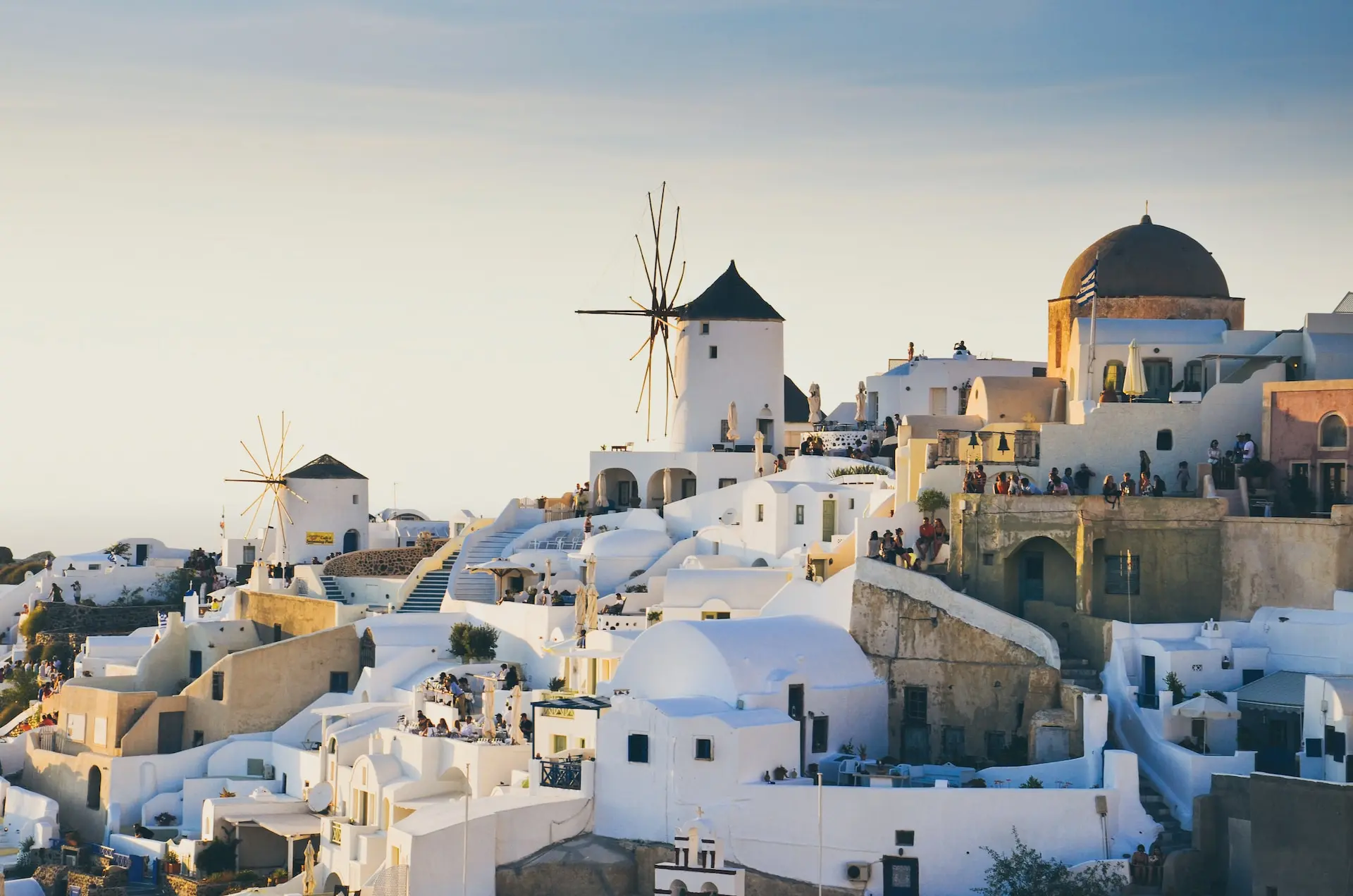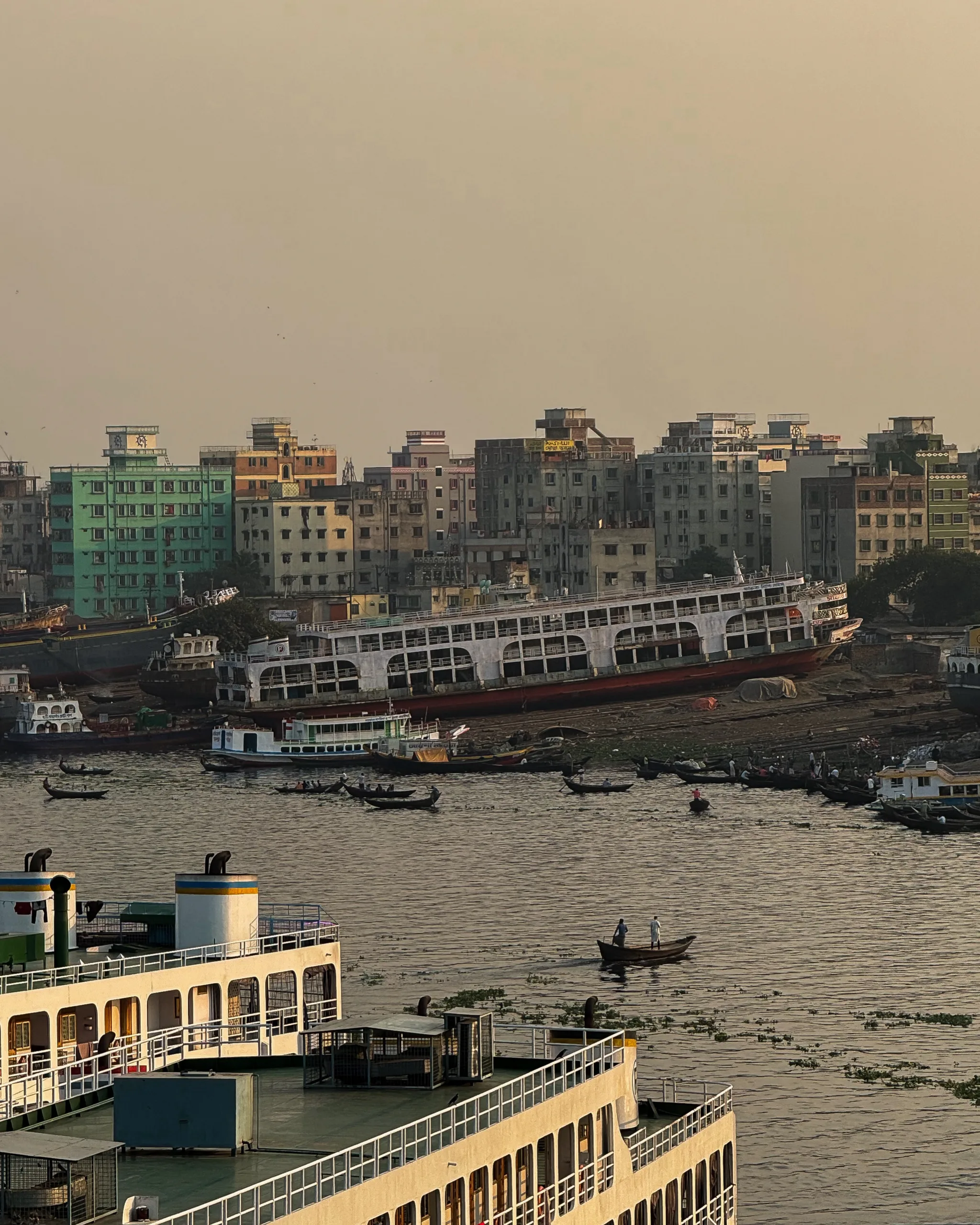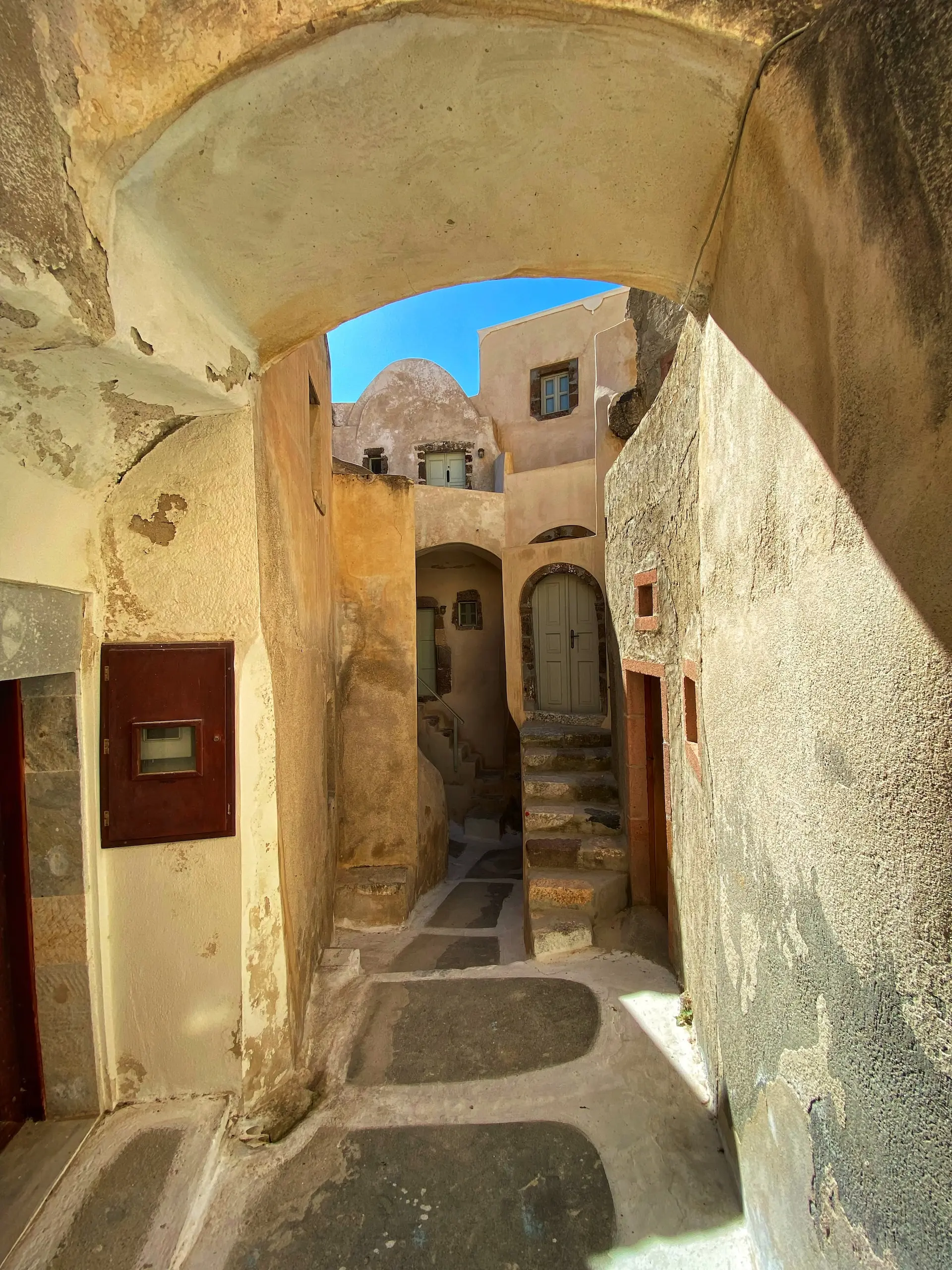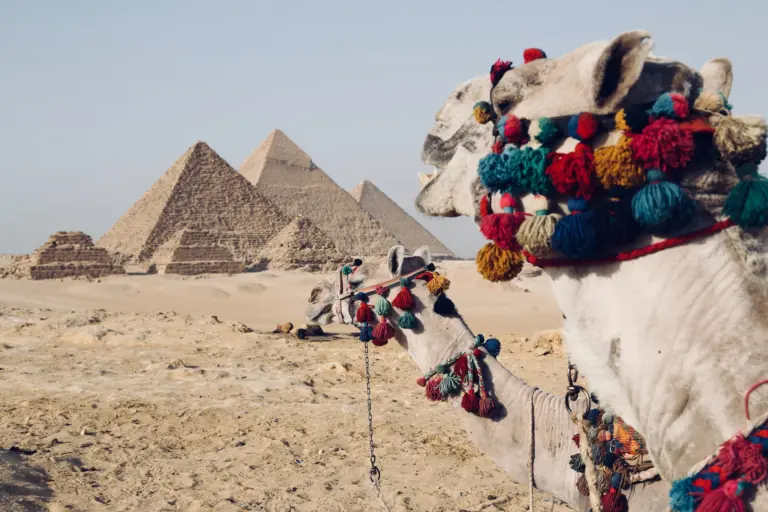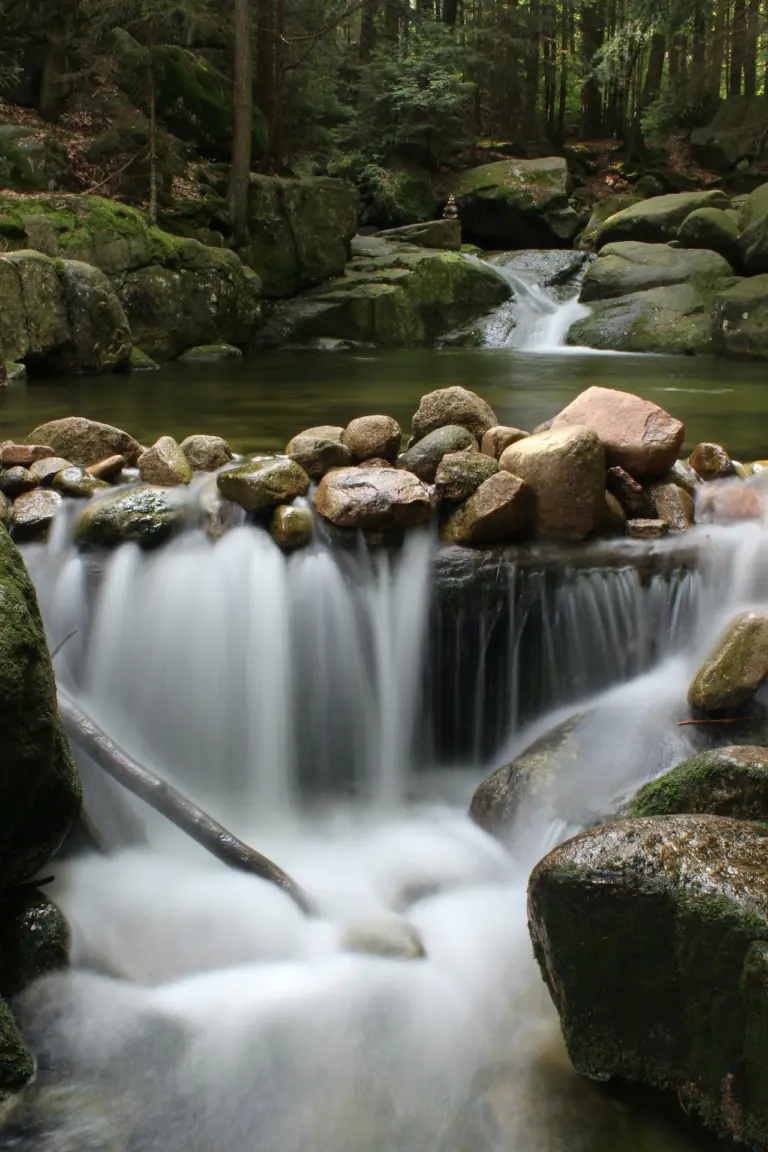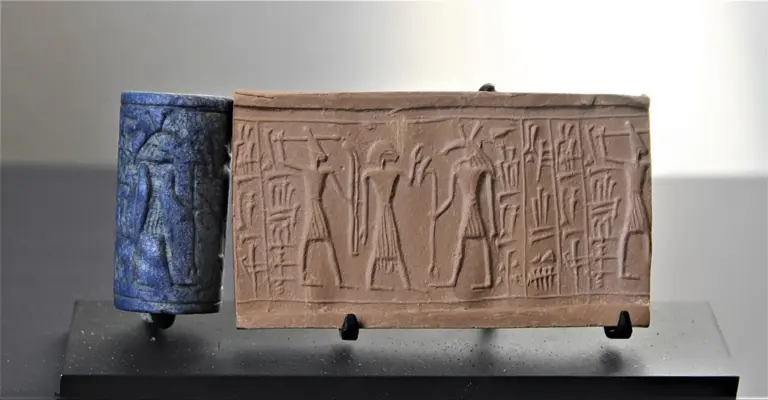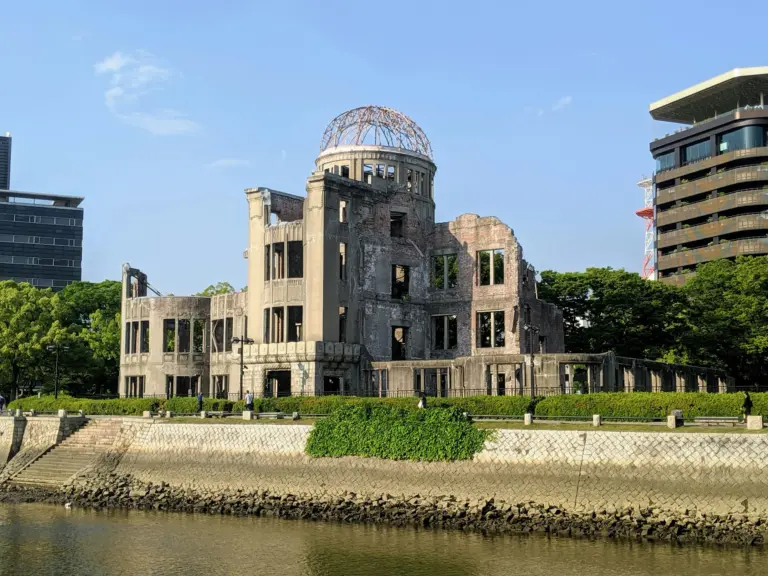Hanoi holds a special place in my heart, as it was one of the first destinations I visited during my solo backpacking trip in Southeast Asia. The city exudes a unique charm with its street-side cafes and small plastic stools where everyone gathers to eat and chat. Its parks and temples, along with its rich history, make Hanoi one of the cultural hubs of Vietnam. The sights and sounds of the city can be quite overstimulating, the traffic itself was an unforgettable experience, the very first time we entered the fray, I clung unto my Vietnamese friend’s back for dear life as she swerved her scooter through endless waves of vehicles. It was quite exhilarating to be honest!
In Hanoi, there’s really something for everyone so join me on this journey to discover the heart and soul of Vietnam’s capital!
Table of Contents
Toggle
History of Hanoi
Hanoi, the capital of Vietnam, has a rich and complex history that spans over a thousand years. It was founded in 1010 by Emperor Ly Thai To, who moved the capital from the southern city of Hoa Lu to the more strategically located Hanoi, which was then called Thang Long, or “Ascending Dragon”. For many centuries, Thang Long was a thriving cultural and commercial center, attracting merchants, scholars, and artists from all over Asia.
In the 19th century, Hanoi came under French colonial rule, and the city underwent a significant transformation, with new buildings, roads, and bridges being built in the European style. The French also introduced new technologies and industries, such as railways, telegraph lines, and printing presses, which helped modernize the city and connect it to the rest of the world.
During the 20th century, Hanoi became a focal point of the struggle for Vietnamese independence and reunification. In 1945, Ho Chi Minh declared Vietnam’s independence from French colonial rule in Hanoi’s Ba Dinh Square, and the city remained a key political and military center throughout the Vietnam War.
Vietnamese Culture Overview
Vietnamese culture is one of the most vibrant in Southeast Asia, with a rich history spanning over 4,000 years. From its ancient dynasties to its French colonial past, Vietnam’s culture is a blend of indigenous traditions and foreign influences. Despite the country’s tumultuous history, the Vietnamese people have preserved their cultural heritage with pride and resilience, making it a very unique traveling experience.
For those who want to dive deeper into the topic, I go a bit more in-depth on the key elements of Vietnamese culture in this blog post, from its language and customs to its art and cuisine.
Best Places to Visit in Hanoi
1. Old Quarter
As you wander through the Old Quarter, you’ll be transported back in time to a different era. This historic district dates back to the 13th century and is filled with narrow streets, ancient buildings, and bustling markets. The area is also known for its street food, my friend took me here for breakfast to eat as she states “authentic” Vietnamese pho and banh mi sandwiches.
Cost: Free

2. Hoan Kiem Lake
Just near the Old Quarter is Hoan Kiem Lake, a serene oasis in the middle of the busy city. Legend has it that a giant turtle once lived in the lake and gave a magical sword to the hero Le Loi, who used it to drive out the Chinese invaders. Personally, I felt that Hoan Kiem Lake is really the heart of Hanoi, it’s one of the places that I always gravitate to when looking for peace.
Cost: Free
3. Hoa Lo Prison Relic
Hoa Lo Prison was built by French colonialists in the late 1800s to house Vietnamese political prisoners, but later became known as the infamous “Hanoi Hilton” during the Vietnam War, when it held American prisoners of war. Today, the prison has been turned into a museum, displaying exhibits on the history of the prison and the struggles of Vietnamese people during the colonial period and the war. You can see the cramped, squalid conditions in which the prisoners were held, as well as displays of harrowing torture devices and even a guillotine. The museum offers an immersive and thought-provoking look into Vietnam’s past.
Cost: 30,000 VND (1.30 USD)
4. Temple of Literature
The Temple of Literature, also known as Van Mieu, is a Confucian temple located in the heart of Hanoi. It was built in 1070 as the first university in Vietnam and served as the country’s center of higher education for more than 700 years. The temple is dedicated to the Chinese philosopher Confucius and his followers and is a symbol of Vietnam’s long-standing reverence for education and scholars. Many students still come to the temple to pray for success in their studies to this day.
Cost: 30,000 VND (1.30 USD)

5. Tran Quoc Pagoda
Tran Quoc Pagoda is the oldest Buddhist temple in Hanoi, dating back to the 6th century during the reign of Emperor Ly Nam De Dynasty (544-548). It is located on a small island in the middle of West Lake. The temple complex features multiple structures, including a main sanctuary, a tower, and a museum, all adorned with intricate carvings and statues of Buddha. Tran Quoc Pagoda is considered a symbol of Vietnamese Buddhism and has been a pilgrimage site for centuries.
Cost: Free
6. Imperial Citadel of Thang Long
The Imperial Citadel of Thang Long, a UNESCO World Heritage site, is an ancient complex that served as the political center of Vietnam for over 13 centuries and was the residence of numerous Vietnamese dynasties. Over the centuries, the citadel has been destroyed and rebuilt several times, reflecting the many changes in power and governance.
Cost: 30,000 VND (1.30 USD)
7. One Pillar Pagoda
One Pillar Pagoda was built in 1049 by Emperor Ly Thai Tong, this pagoda is shaped like a lotus blossom emerging from a pond. The story behind its creation is fascinating, the emperor dreamt of the Bodhisattva Avalokiteshvara who handed him a son while sitting on a lotus throne, and shortly thereafter, he and his wife had a son. After being instructed by a monk, he then built the temple in the middle of a lotus pond. The pagoda has been destroyed and rebuilt several times throughout its history, most recently during the Vietnam War.
Cost: Free

8. Ho Chi Minh's Mausoleum
Ho Chi Minh’s Mausoleum was built in honor of Vietnam’s most famous leader, Ho Chi Minh, who led the country to independence from French colonial rule. The imposing building stands 21.6 meters (70 ft) tall and is made of gray granite. The exterior is simple, yet grand, with a series of steps leading up to the entrance, where you can see Ho Chi Minh’s embalmed body. Be mindful that the process of visiting the mausoleum is quite strict and everyone is expected to show respect throughout the experience. There are dress codes, no photography or recording allowed, and it is not even allowed to speak or raise their hands inside the mausoleum.
If you’re interested, you can also join a tour that combines a visit to the various temples and the mausoleum through here.
Cost: 25,000 VND (1.05 USD)
Hidden Gems in Hanoi
9. Vietnamese Women's Museum
The Vietnamese Women’s Museum is a unique museum that celebrates the accomplishments and contributions of Vietnamese women throughout history. The museum is dedicated to showcasing the lives and stories of Vietnamese women, from those who fought in wars to those who excelled in various professions, arts, and social movements.
Cost: 40,000 VND (1.70 USD)

10. Vietnam Museum of Ethnology
A must-visit for anyone interested in the diverse cultures and ethnic groups of Vietnam. This museum showcases the cultural heritage of the 54 ethnic groups that make up Vietnam, from the traditional clothing, musical instruments, and tools to the unique rituals and customs that have been passed down through generations. The museum is divided into indoor and outdoor sections.
In the indoor exhibits, visitors can explore the history and culture of each ethnic group through displays of artifacts, photographs, and multimedia presentations.
The outdoor area was the highlight for me, it features several full-scale traditional houses, and I really mean it by that. Those houses were larger than life are an amazing sight to behold! They were built to replicate the architecture of different ethnic groups, while giving you a chance to experience the unique living spaces and lifestyles of each community. There were also a lot of really “phallic” statues decorating the exterior of some of the sites there.
Cost: 40,000 VND (1.70 USD)
11. Ngoc Son Temple
Make sure to also add Ngoc Son Temple to your itinerary. It’s a gorgeous temple located right on an islet in Hoan Kiem Lake.
To enter the temple, you’ll need to walk across a vibrant red wooden bridge and climb a set of stairs. Once inside, you’ll be awed by the intricate carvings, stunning altars, and ancient artifacts that fill the temple.
Cost: 30,000 VND (1.30 USD)
12. Quan Thanh Temple
Quan Thanh Temple is an ancient temple which dates back to the 11th century. The temple is dedicated to Tran Vu, a very important deity in Taoism. The statue is nearly four meters tall and weighs around four tons, making it a remarkable sight to behold.
It is one of the Four Sacred Temples that were built in four directions to protect the capital from malevolent spirits. Quan Thanh temple protects from the North.
Cost: 10,000 VND (0.50 USD)
13. Vietnam Military History Museum
The Vietnam Military History Museum is a fascinating destination for history buffs visiting Hanoi, Vietnam. The museum is located in the heart of the city and was founded in 1956, following the country’s struggle for independence from French colonial rule and its fight against American involvement in the Vietnam War.
The museum houses an impressive collection of military artifacts, including weapons, vehicles, and equipment used by the Vietnamese army throughout history. You can also see displays of military uniforms, medals, and photographs, providing a comprehensive look at Vietnam’s military history.
Cost: 30,000 VND (1.30 USD)

14. Trang An
If you’re looking for a day trip from Hanoi, Trang An should be at the top of your list. Trang An is a stunning UNESCO World Heritage Site located in the Ninh Binh province of Vietnam. It’s known for its beautiful karst landscapes, with towering limestone cliffs, lush forests, and winding rivers. I was quite lucky that my friend took me to this place and it’s definitely worth the trip, according to her it’s a great alternative to Ha Long Bay.
You’ll explore Trang An by taking a boat tour along the river. There’ll be a paddler and they’ll take you through a series of caves and grottoes, where you can marvel at the natural beauty of the area. You’ll also get to see several ancient temples and pagodas that are nestled on the cliffs. You can join a day tour from Hanoi to Trang An here!
Cost: 250,000 VND (11.00 USD) for 1 person per boat ride
Top Things to Do in Hanoi
15. People Watch in Parks
One of my favorite things to do while in Hanoi was simply to relax and people watch at various parks.
The city has several beautiful parks, but the one I recommend the most is Hoan Kiem Lake, which is located in the heart of the city and is surrounded by lush greenery.
In the early mornings and evenings, the park comes alive with locals practicing tai chi, jogging, and even some tango! You can then take leisurely stroll around the lake while enjoying the amazing blend of city and nature.
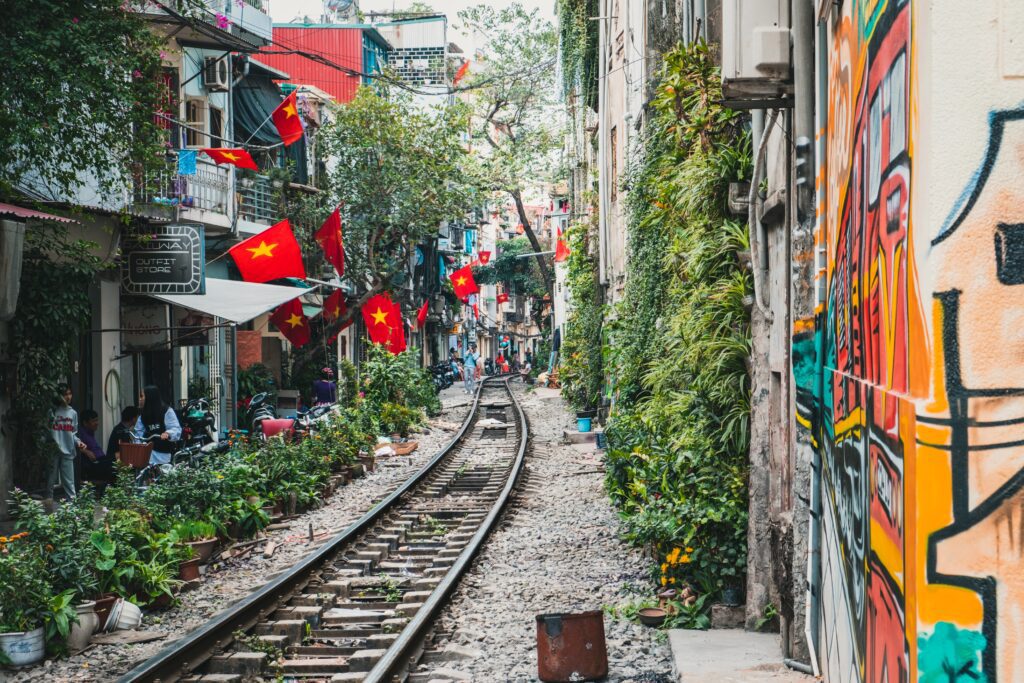
16. Catch the Train in Train Street
A very Instagrammable place and quite an exciting activity to do, Train Street is a narrow alley in the Old Quarter where train tracks run through the middle of the street. Twice a day, a train passes through the street, creating a thrilling and unforgettable experience! You can feel the rush of wind as the train passes by, and the sound of the horn echoes through the narrow alleyway. It can get quite crowded here during peak hours so make sure to keep a watch on your belongings!
If you’re up for it , you can join a Hanoi food tour that visits train street through here.
17. Check out the Night Market
The Night Market in Hanoi is located on one of the city’s busiest streets and stretches a remarkable 3 kilometers long. The market runs from Dong Kinh Nghia Thuc Square all the way to Dong Xuan Market Gate.
The Night Market is a great place to shop for souvenirs, clothing, and accessories, and you can find some great deals on everything from handcrafted items to designer knockoffs.

18. Marvel at a Traditional Water Puppet Show
One of the most unique cultural experiences in Hanoi is watching a traditional water puppet show. Water puppetry is a traditional art form in Vietnam, which dates back to the 11th century. The shows are performed in a pool of water, with the puppeteers standing behind a bamboo screen and manipulating the puppets using long bamboo rods and strings.
The water puppet shows typically tell stories of Vietnamese folklore and history, with music and narration in Vietnamese. The puppets are intricately designed and decorated, and the show is accompanied by live traditional music.
The Thang Long Water Puppteris one of the most popular venues for water puppet shows in Hanoi. The theater is located in the Old Quarter of the city and offers daily performances. Do note that the performances are in Vietnamese but it didn’t stop me or any of the other foreigners in the theatre from enjoying the amazing show!
You can get your tickets at a discounted rate through here.
19. Watch an Opera at Hanoi Opera House
The Hanoi Opera House is a stunning architectural masterpiece and a cultural landmark of the city. Built-in 1911, the Opera House is located in the French Quarter.
The Opera House hosts a variety of performances throughout the year, including ballets, classical music concerts, and operas. The shows feature local and international talent, and the Opera House has been praised for its acoustics and grandeur.
20. Experience the Street Food Scene
No trip to Hanoi would be complete without experiencing the city’s famous street food scene. Hanoi is known for its delicious and diverse cuisine, with a wide range of dishes available at affordable prices from street vendors and food stalls. Having that authentic experience of sitting by those low seats by the roadside is the icing on the cake!
Some of the most popular street food dishes in Hanoi include pho (noodle soup), banh mi (Vietnamese-style baguette), bun cha (grilled pork with noodles), and cha ca (grilled fish with herbs and noodles). You can also find a variety of sweet treats, such as che (sweet soup) and banh cuon (steamed rice rolls).
Where to Stay in Hanoi
Hanoi has plenty of accomodations to choose from, though I recommend staying near the Old Quarter or Hoan Kiem Lake for that really immersive feel, here are just some of my recommendations:
Best Hotels in Hanoi
- Hanoi Paradise Center Hotel & Spa – is a 4-star hotel located in Hanoi, just a 5-minute walk from the Thang Long Water Puppet Theater. The hotel offers a range of amenities, including a shared lounge, private parking, a terrace, and a bar.
- Hanoi Chic Boutique Hotel – close to Dong Xuan Market and St. Joseph Cathedral. The hotel offers a snack bar and comfortable rooms, featuring a flat-screen TV, seating area, kettle, and private bathroom with free toiletries. The hotel also has a 24-hour front desk and bike hire is available if you want to cycle around the area, which I highly recommend doing!
- Hanoi Lake View Hotel & Spa – is located in Hanoi’s Old Quarter, offering you sweeping city views. It is a minute’s walk from Hoan Kiem Lake, Ngoc Son Temple, and Thang Long Water Puppet Theater. Rooms are modern with hardwood flooring, natural light, and a 32-inch flat-screen TV. The hotel offers travel arrangements, bike/car rentals, and ticketing services, and airport transfers can be requested at an additional cost.
Best Hostels in Hanoi
- Old Quarter View Hanoi Hostel – is a 3-star hostel offering air-conditioned rooms, free WiFi, and a shared lounge. The hostel features a restaurant, room service, and a 24-hour front desk. There’s also an ATM, concierge service, and currency exchange. The hostel offers rooms with a safety deposit box, closet, bed linen, and towels.
- Drift Backpackers Hostel – offering guests air-conditioned rooms, free WiFi, and a shared lounge. You can enjoy Asian dishes at the restaurant or a drink at the bar. Rooms are equipped with a balcony and some rooms have a city view and a private bathroom with a shower and hairdryer. The hostel also offers a buffet breakfast every morning.
- Little Charm Hanoi Hostel – offers stylish accommodations and an Italian-style restaurant on site, as well as an indoor swimming pool and a bar. Of course, free WiFi access. The units at the hostel are equipped with personal lockers and reading lights. You also have access to a shared bathroom with a shower and free toiletries. A continental breakfast is available each morning.
How to Get Around Hanoi
- Walking: Hanoi is a walkable city, with many of the main attractions located within walking distance of each other. It’s one of the few cities where I really recommend taking public transportation or just walking as I really found the streets to be quite chaotic and dangerous especially for first-time drivers.
- Taxis: Taxis are widely available in Hanoi are a great way to get around as well. Make sure to use reputable taxi companies, and always negotiate the fare before getting in the car as even my friend and I got overcharged. The starting fare for most taxis is around 10,000 VND (0.50 USD) for the first kilometer, and the fare increases by around 15,000 VND for each additional kilometer traveled.
- Xe Om: Motorbike taxis, or xe om, are a fun and adventurous way to get around Hanoi. They are especially useful for navigating the narrow streets of the Old Quarter. Just make sure to wear a helmet and as always negotiate the fare before hopping on.
- Bus: Hanoi has an extensive bus network with routes that cover most areas of the city. Buses are a convenient and affordable way to get around, with fares starting at around 7,000 VND for a single journey. However, buses can be crowded and confusing, as many of the signs and announcements are in Vietnamese, try to ask locals or your accomodation for some help.
- Metro: Hanoi opened metro Line 2A on November 6th 2021, making it the first urban rail transit line in Vietnam. The line runs from Cat Linh Station to Yen Nghia Station, with 8 stations in total. The trains run on elevated tracks and are air-conditioned!
- Bicycle: Bicycles can be rented from various shops and hotels in Hanoi, and they are a great way to explore the city at your own pace. As always be careful with the traffic and maybe bring a helmet just in case.
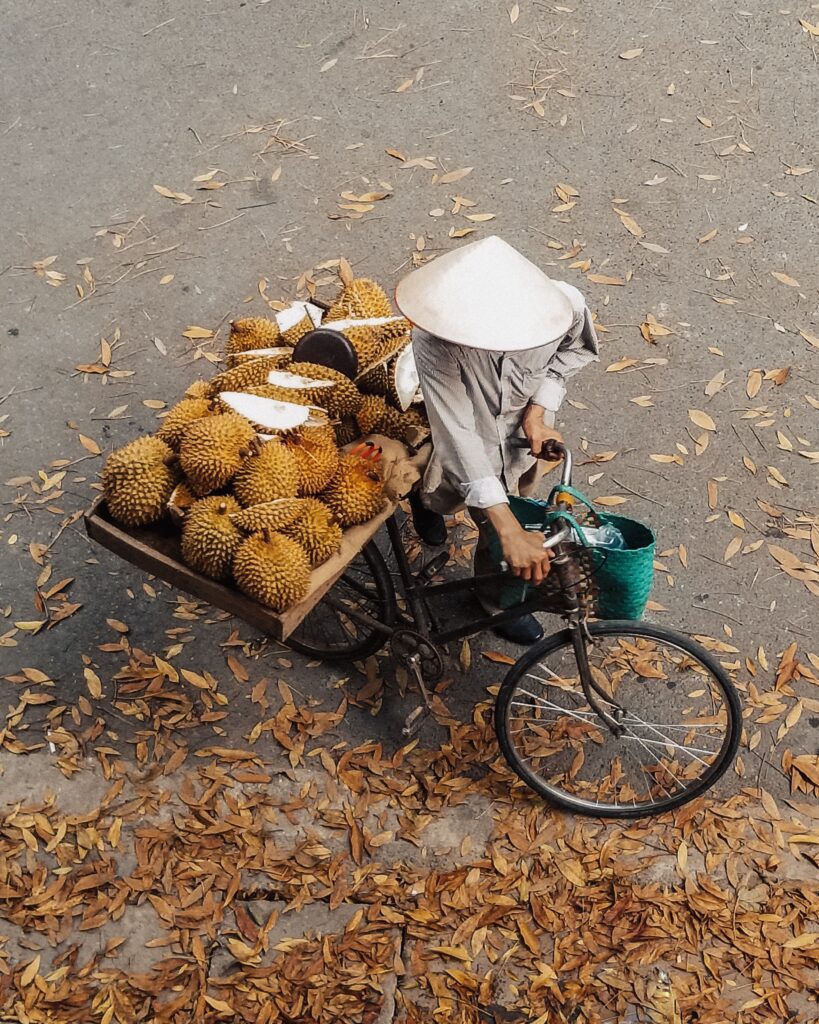
How to Stay Safe in Hanoi
Hanoi can be more or less a safe place for anyone visiting with a little bit of common sense. Here are just some safety tips from my side: Petty theft can be quite common especially in the crowded tourist areas so be extra vigilant especially at night. Also exercise proper taxi negotiation and make sure to agree on a price before going in the cab.
When it comes to street food, try to eat at places where there are a lot of people, of course it’s not to say that the food is dirty but some stomachs are just a bit too sensitive.
Drink spiking also does happen in the party scene so always keep an eye out on your drinks.
Again and again, I can’t stress this enough but the traffic is one to be careful of especially if you’re the one in it. I remember when we were going to the Ethnology Museum and I straight up saw 3 accidents happen on that one journey, including a crushed helmet. Quite traumatic to be honest.
Before heading out to Vietnam, I recommend getting some travel insurance from SafetyWing, an insurance by nomads for us nomads.
Best Time to Visit Hanoi
The dry season in Hanoi is from October to April when temperatures are mild and there is less rainfall. The best months to visit during the dry season are from October to December and from March to April. During these months, temperatures average around 20-25°C (68-77°F) during the day and can drop to around 15°C (59°F) at night.
The rainy season in Hanoi is from May to September when temperatures are warmer and there is more rainfall. The best time to visit during the rainy season is from May to June, when the rain is lighter and temperatures are still relatively mild. July and August can be quite hot and humid, with temperatures averaging around 30-35°C (86-95°F) during the day and around 25°C (77°F) at night.
What to Pack For Hanoi
- Clothing: For the cooler months from November to March, packing layers is recommended, such as a light jacket or sweater. For the warmer months from April to October, pack lightweight, breathable clothing made from natural fabrics like cotton or linen. It’s also important to pack modest clothing that covers the shoulders and knees, particularly when visiting religious sites.
- Sunscreen: Hanoi can have strong sun, especially during the summer months
- Insect repellent: Hanoi is a tropical city, and mosquitoes can be an issue, particularly in the summer months
- Adapter: Vietnam uses type A, C, and D electrical outlets
- Medicine: Particularly stomach medicine just in case for the occassional mishap!
Plan Your Trip to Hanoi | Best Travel Resources
Book Your Accommodations
- Booking.com – the world’s leading online booking platform for accomodations around the world, they have an extensive amount of available listings with zero booking fees and best price guarantees.
- Hostelworld – a backpacker’s best friend, Hostelworld has the largest collection of hostels and guesthouses for affordable prices.
Don’t Forget Insurance
- SafetyWing – from Nomad Insurance, an insurance by nomads for nomads. They understand our lifestyle well and have really comprehensive and flexible plans that cater to any traveler.
Find Cheap Flights
- Kiwi.com – my go-to for booking and finding the cheapest flights and it’s helped me save tons of money. They do virtual interlining which is connecting flights from airlines that do not codeshare, so you can find routes that you wouldn’t be able to find normally.
Join Tours & Activities
- GetYourGuide – is one of the best places to find unique tours and activities. I found that it’s an excellent way to meet fellow travelers and create fond memories. They are not only limited to tours as they also offer niche services such as skip-the-line tickets or private transfers.
Catch a Ride
- Rentalcars.com – nothing beats the freedom of the road, Rentalcars.com is the world’s largest online car rental service. They operate across 160 countries so they’re the perfect partner to work with if you find yourself wanting a ride.

